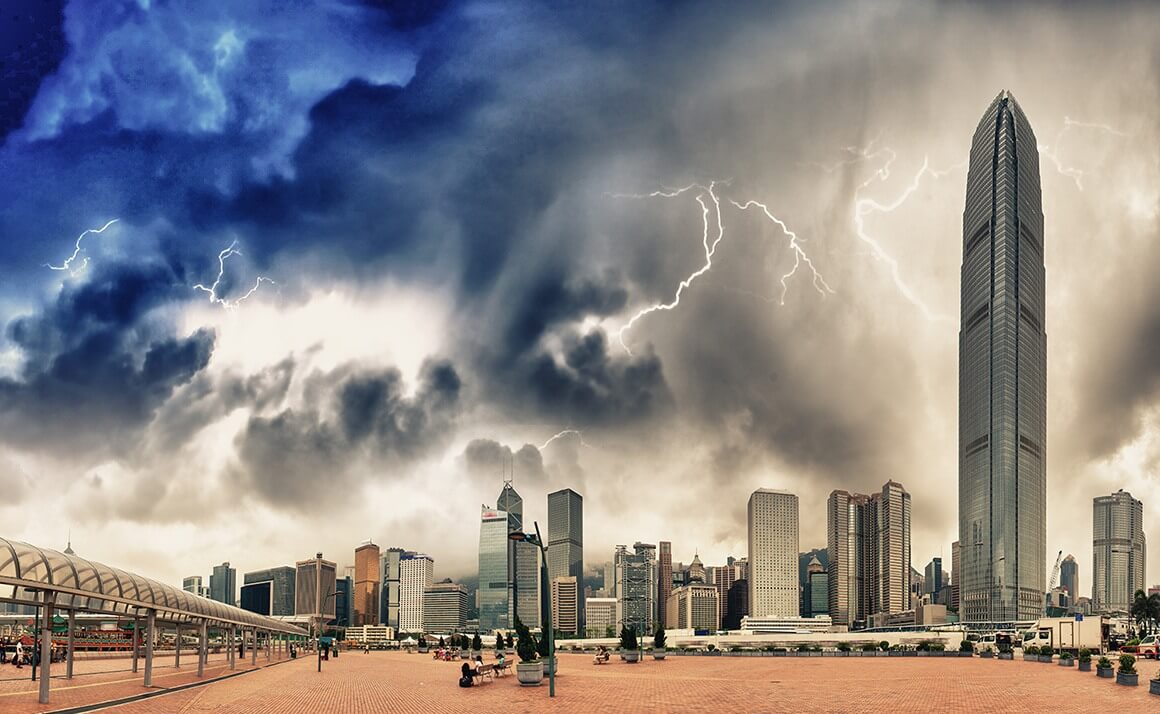
Weathering the storm
The concept of resilience has become increasingly important in investing, with a major focus on climate change, nonetheless there is a multitude of other change risks: demographic, economic, political and technological.
The Rockefeller Foundation’s 100 Resilient Cities programme defines resilience as: “100 Resilient Cities defines resilience as the capacity of individuals, communities, institutions, businesses, and systems within a city to survive, adapt, and grow, no matter what kinds of chronic stresses and acute shocks they experience.”
The rising demand for core real estate in Asia Pacific is partially a reflection of the desire for more resilient investment, a reflection of the perception that most real estate markets are late in the cycle.
Simon Smith, head of Asia Pacific research at Savills, says: “At this stage of the cycle, it is natural for investors to seek out defensive assets and strategies, but the real estate fundamentals which drive long-term growth – such as demographics and urbanisation in developing Asian cities – mean resilience is not just a characteristic of mature markets.”
TH Real Estate recently launched the Asia Pacific Cities Fund, an open-ended core fund, with a 7-10% long-term annual return target. THRE joins managers such as Invesco, Morgan Stanley Real Estate Investing, PGIM and M&G Real Estate in launching an Asia Pacific core strategy.
The THRE approach has resilience at its heart and focuses on a wider range of cities than rival funds. Alice Breheny, head of global research at THRE, says: “We use a proprietary research process to identify the top 2% of global cities, 17 of which are located in Asia Pacific. This approach takes into account a wide range of characteristics: scale, transparency, stability and most importantly, structural megatrends, and helps to future-proof a portfolio for long-term relevance and growth.”
The 17 cities are divided into two groups. The ‘principal investment cities’: Beijing, Shanghai, Seoul, Tokyo, Osaka, Nagoya, Hong Kong, Singapore, Sydney, Melbourne and Brisbane, are larger markets with good liquidity.
The “progressive investment cities” of Shenzhen, Guangzhou, Perth, Canberra and Adelaide have lower liquidity but good growth prospects.
A more leftfield approach to resilience is advocated by author Nassim Nicholas Taleb in his book Antifragile. His definition of antifragility is something that thrives “when exposed to volatility, randomness, disorder, and stressors.”
A possible antifragile investment strategy is the “barbell strategy”, which focuses on extremely low-risk investments at one end and speculative investments with high growth potential at the other. In real estate terms this could mean a portfolio of core office investments, balanced by South East Asian hotels. The Rockefeller Foundation’s 100 Resilient Cities programme defines resilience as: “100 Resilient Cities defines resilience as the capacity of individuals, communities, institutions, businesses, and systems within a city to survive, adapt, and grow, no matter what kinds of chronic stresses and acute shocks they experience.”
The rising demand for core real estate in Asia Pacific is partially a reflection of the desire for more resilient investment, a reflection of the perception that most real estate markets are late in the cycle.
Simon Smith, head of Asia Pacific research at Savills, says: “At this stage of the cycle, it is natural for investors to seek out defensive assets and strategies, but the real estate fundamentals which drive long-term growth – such as demographics and urbanisation in developing Asian cities – mean resilience is not just a characteristic of mature markets.”
TH Real Estate recently launched the Asia Pacific Cities Fund, an open-ended core fund, with a 7-10% long-term annual return target. THRE joins managers such as Invesco, Morgan Stanley Real Estate Investing, PGIM and M&G Real Estate in launching an Asia Pacific core strategy.
The THRE approach has resilience at its heart and focuses on a wider range of cities than rival funds. Alice Breheny, head of global research at THRE, says: “We use a proprietary research process to identify the top 2% of global cities, 17 of which are located in Asia Pacific. This approach takes into account a wide range of characteristics: scale, transparency, stability and most importantly, structural megatrends, and helps to future-proof a portfolio for long-term relevance and growth.”
The 17 cities are divided into two groups. The ‘principal investment cities’: Beijing, Shanghai, Seoul, Tokyo, Osaka, Nagoya, Hong Kong, Singapore, Sydney, Melbourne and Brisbane, are larger markets with good liquidity.
The “progressive investment cities” of Shenzhen, Guangzhou, Perth, Canberra and Adelaide have lower liquidity but good growth prospects.
A more leftfield approach to resilience is advocated by author Nassim Nicholas Taleb in his book Antifragile. His definition of antifragility is something that thrives “when exposed to volatility, randomness, disorder, and stressors.”
A possible antifragile investment strategy is the “barbell strategy”, which focuses on extremely low-risk investments at one end and speculative investments with high growth potential at the other. In real estate terms this could mean a portfolio of core office investments, balanced by South East Asian hotels.
Further reading:
100 Resilient Cities
TH Real Estate
Contact us:
Simon Smith


